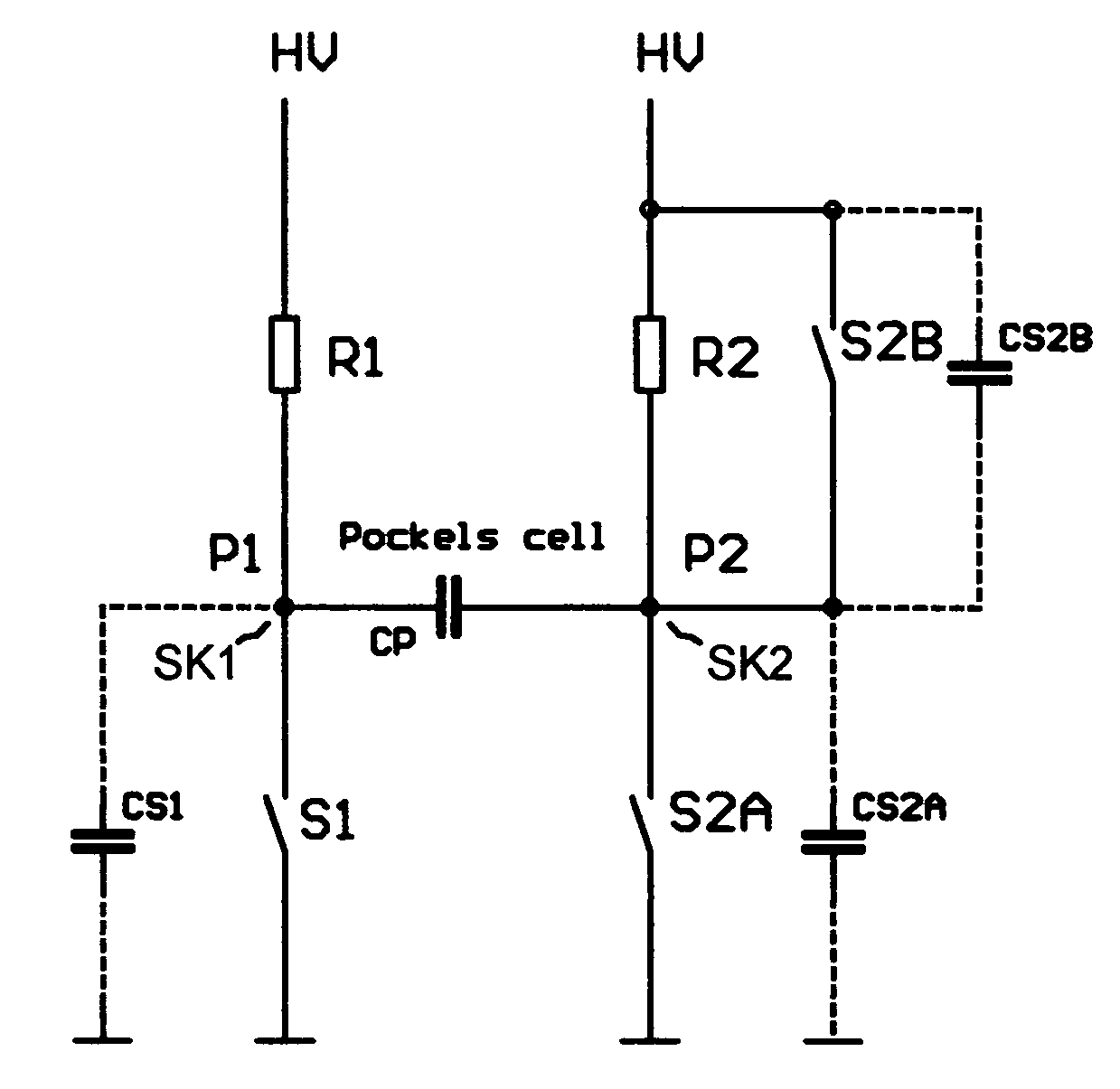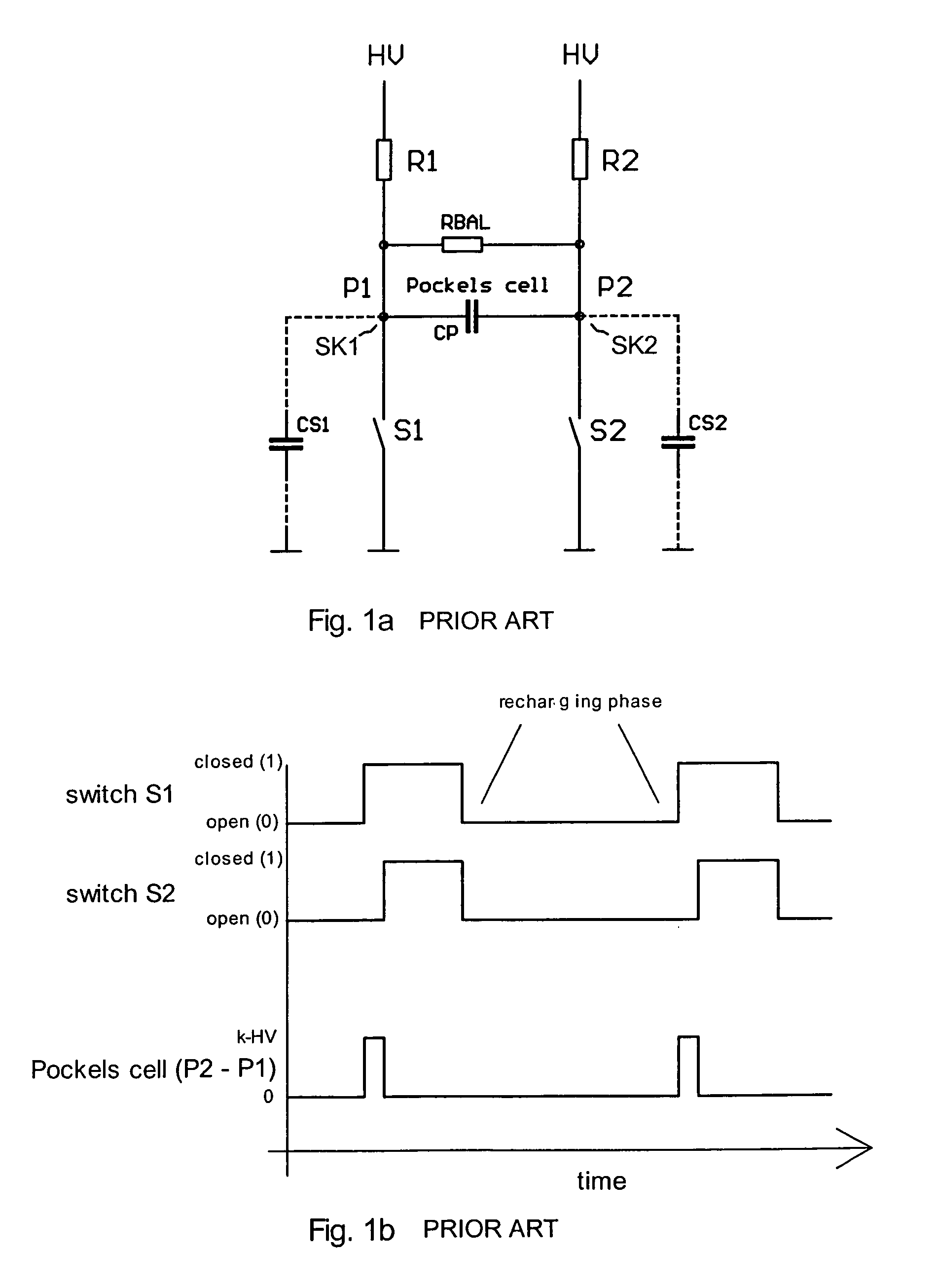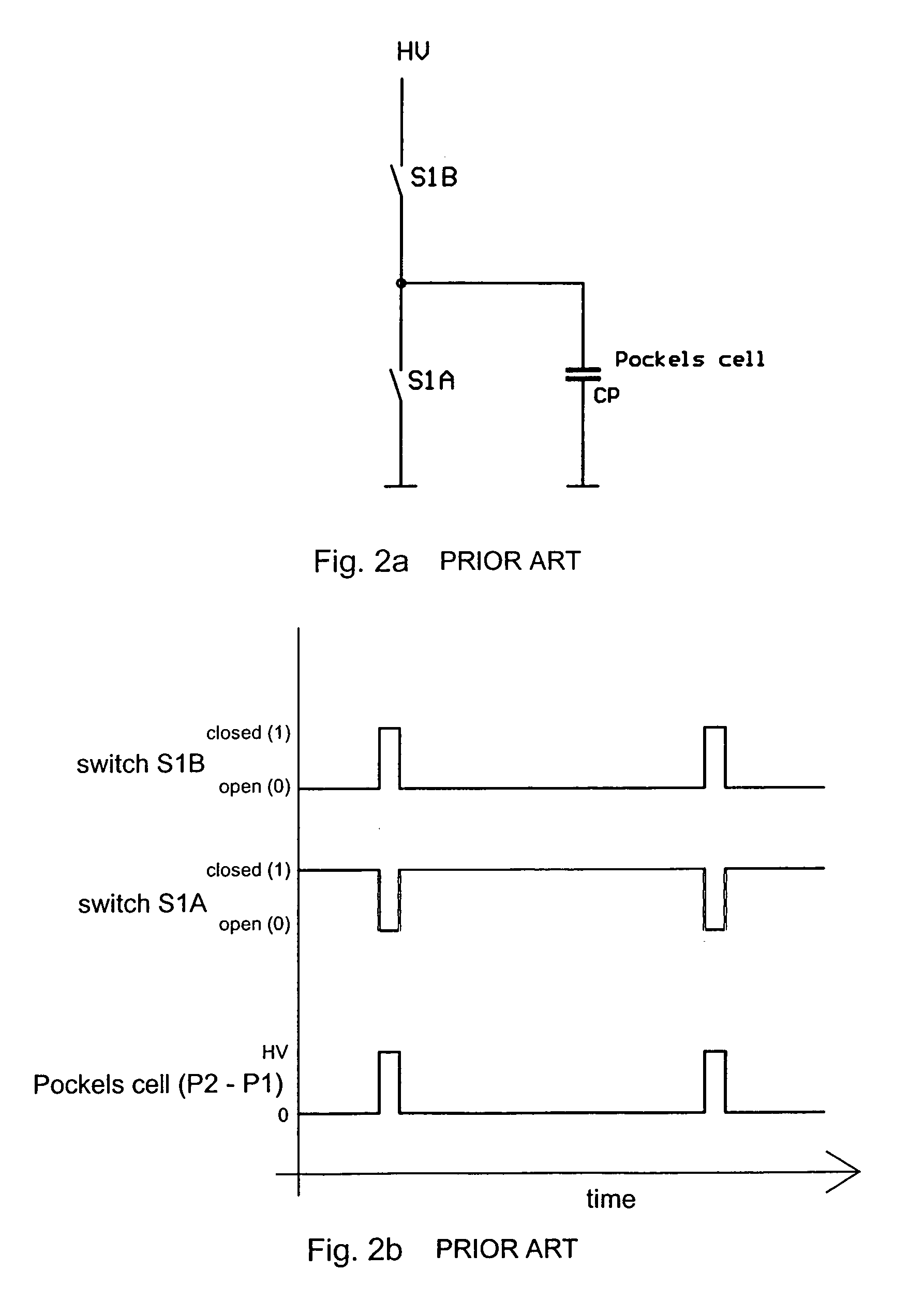Driver for Pockels cell and using this Pockels cell within laser systems
- Summary
- Abstract
- Description
- Claims
- Application Information
AI Technical Summary
Benefits of technology
Problems solved by technology
Method used
Image
Examples
Embodiment Construction
[0042]A first embodiment of the driver according to the invention in FIG. 3a modifies the state-of-the-art H-configuration by adding a high voltage switch S2B in parallel to one of the recharging resistors R2. The intrinsic capacitance of this switch S2b is denoted by CS2B drawn by dashed lines.
[0043]The operation of the driver from FIG. 3a is shown in FIG. 3b. Switch S2B must be closed before closing switch S1. Closing the switch S1 applies the complete voltage from the high voltage power supply to the Pockels cell. Synchronously with closing switch S2A, taking away the voltage across the Pockels cell, switch S2B is opened. During or after the recharging phase switch S2B is closed again.
[0044]FIG. 4 shows another embodiment of the invention where both recharging resistors used in the H-configuration are replaced by switches S1B and S2B. Thus the nodes SK1 and SK2 are connected through only one wire (the first and third wire), containing each one switch (S1B, S2B) with the high volt...
PUM
 Login to View More
Login to View More Abstract
Description
Claims
Application Information
 Login to View More
Login to View More - R&D
- Intellectual Property
- Life Sciences
- Materials
- Tech Scout
- Unparalleled Data Quality
- Higher Quality Content
- 60% Fewer Hallucinations
Browse by: Latest US Patents, China's latest patents, Technical Efficacy Thesaurus, Application Domain, Technology Topic, Popular Technical Reports.
© 2025 PatSnap. All rights reserved.Legal|Privacy policy|Modern Slavery Act Transparency Statement|Sitemap|About US| Contact US: help@patsnap.com



